How Clarence Thomas went from a left-wing Black radical to one of the Supreme Court's most conservative judges
James Pasley

- Clarence Thomas is the longest-serving and oldest justice on the Supreme Court.
- He was part of the conservative minority on the court before more conservative justices joined in recent years.
Clarence Thomas was born on June 23, 1948, in a small town called Pin Point in Georgia.

Source: Esquire
He was born into a family without much money — they used torn sheets for diapers and Spanish moss for toilet paper.

Source: Esquire
When he was 7, his father abandoned their family. In response, his mother sent him to live in Savannah with his grandparents.
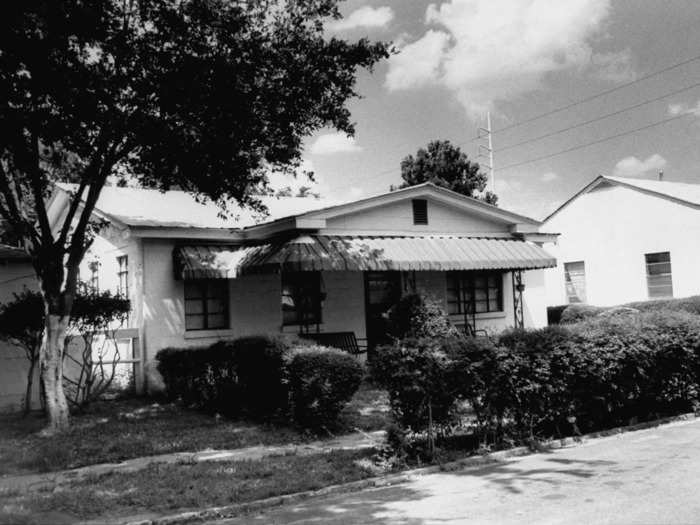
His grandfather was a small business owner and imposed on Thomas a hard-working ethic that would stay with him for the rest of his life.
Sources: New York Times, Esquire
As well as English, Thomas spoke Geechee, a Creole language. At St. Pius X High School, a priest told him he didn't speak proper English, and if he didn't want to be considered inferior, he needed to learn to speak properly.
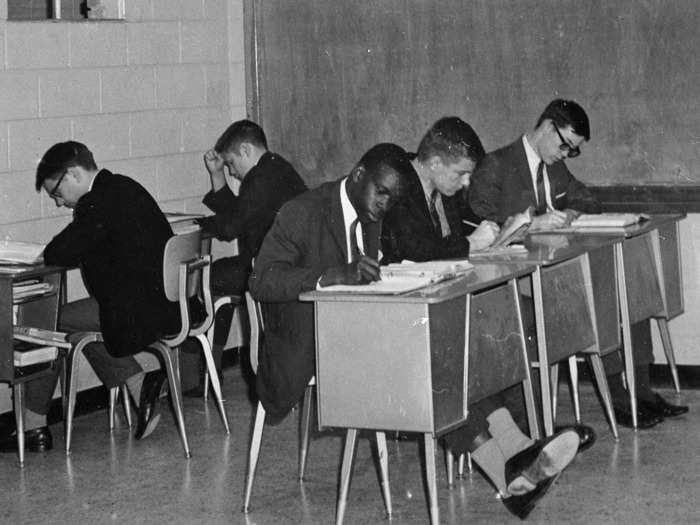
At high school, he encountered racism. His peers called him ABC — "America's Blackest Child."
Sources: Esquire, The Guardian
Thomas spent a year training to become a priest, but after the prejudice he encountered, he changed his mind. In 1968, he enrolled at the College of the Holy Cross in Massachusetts to study English literature.
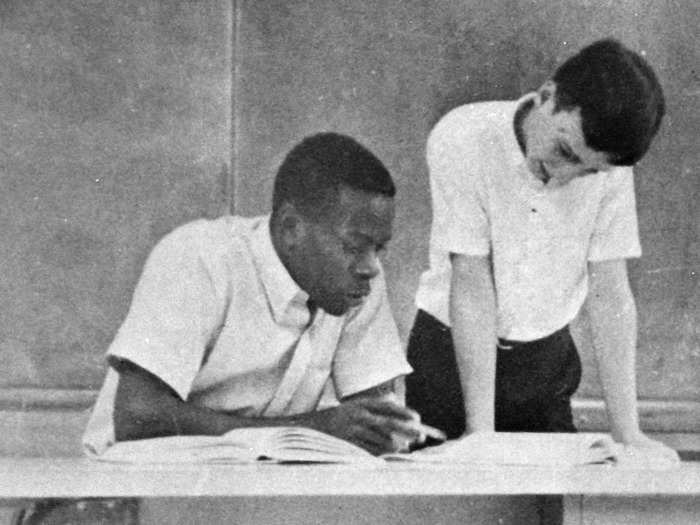
Thomas got involved with the Black Panthers. He participated in marches and sit-ins for Black rights. He protested against the Vietnam War and segregation.
When he was asked at his confirmation hearing what he'd majored and minored in, he said, "English literature" and "protest."
But he didn't go along with everything that was happening on campus.
In a speech he made in 1993, he said he was told he wasn't "really Black" if he didn't have an Afro. He said he didn't define himself based on his haircut and that attitude actually caused him to leave his hair uncombed throughout college.
Sources: Esquire, New Yorker , New Yorker, ABC
While he was at university, he met his future wife Kathy Ambush. They got married after he graduated. They had their only child, Jamal Thomas, in 1973.
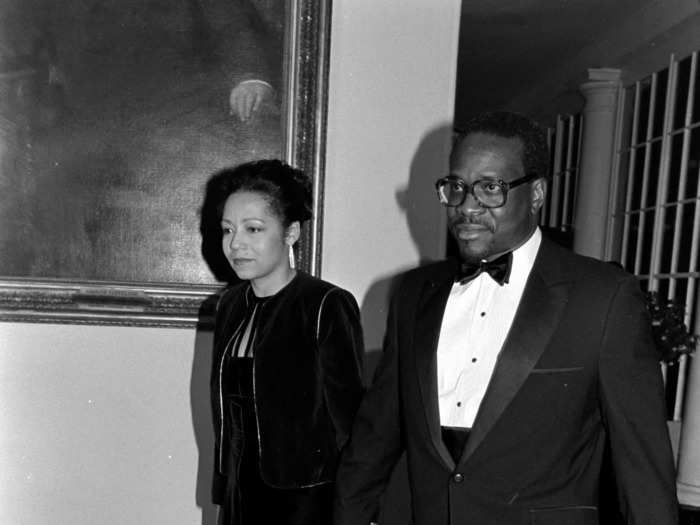
Source: Esquire
Thomas went to Yale to study law. He was accepted via an affirmative action program.
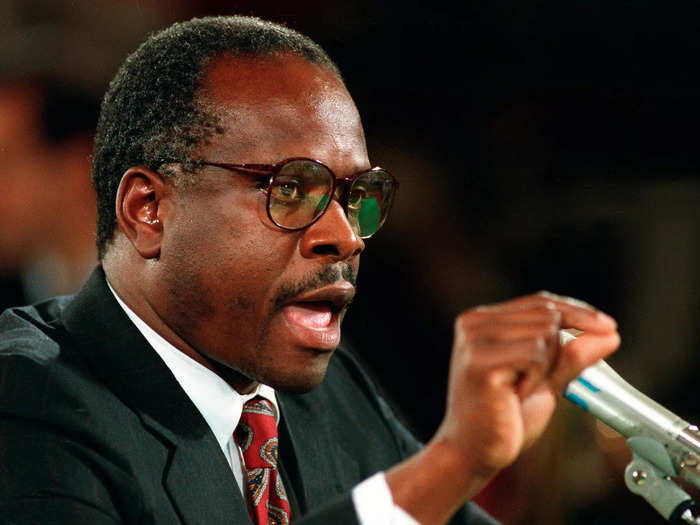
"You had to prove yourself every day because the presumption was that you were dumb and didn't deserve to be there," he told The Washington Post. "Every time you walked into a law class at Yale it was like having a monkey jump down on your back from the Gothic arches."
Source: New Yorker, Washington Post
In 1974, after graduating from Yale, he got a job working for then-Missouri Attorney General John Danforth. He worked on tax and environment issues and refused to have anything to do with race.
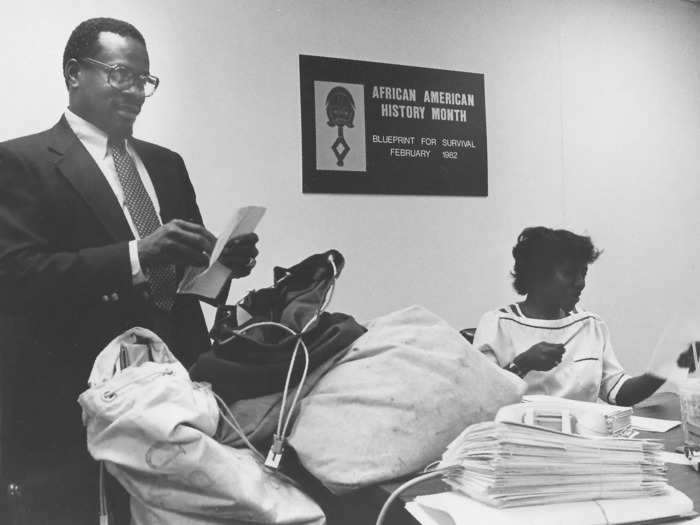
Sources: Esquire, New York Times
Thomas left the government and worked for a brief period for Monsanto Chemical Corporation so he could experience private practice. But in 1979, when Danforth was elected to the Senate, Thomas was rehired.
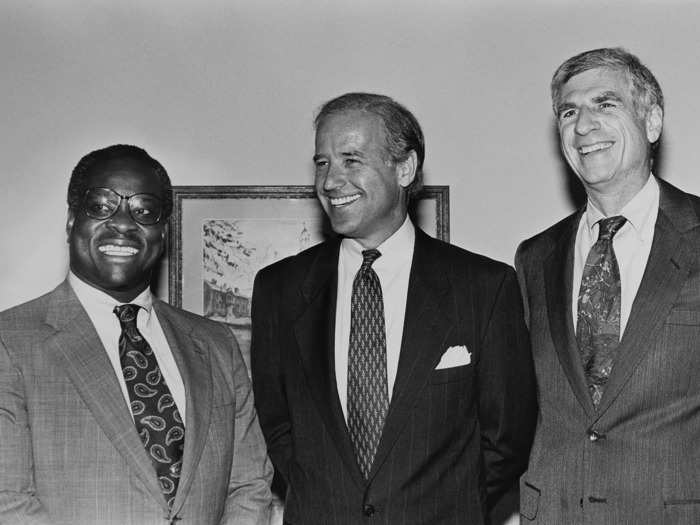
Source: Esquire
In 1980, Ronald Reagan's administration read a profile in The Washington Post about Thomas and offered him a job. He started in the Department of Education before becoming chair of the Equal Employment Opportunity Commission in 1982.
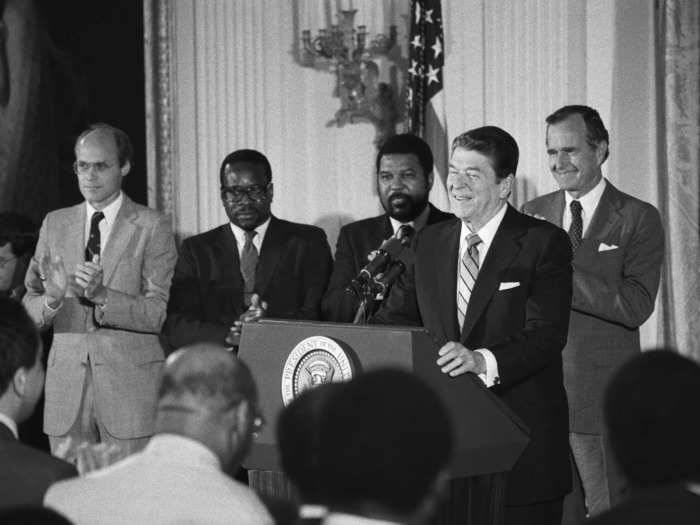
Sources: Esquire, The Nation
During his tenure at the EEOC, he said that instead of working together, Black civil rights leaders, "bitch, bitch, bitch, moan and moan, whine and whine."
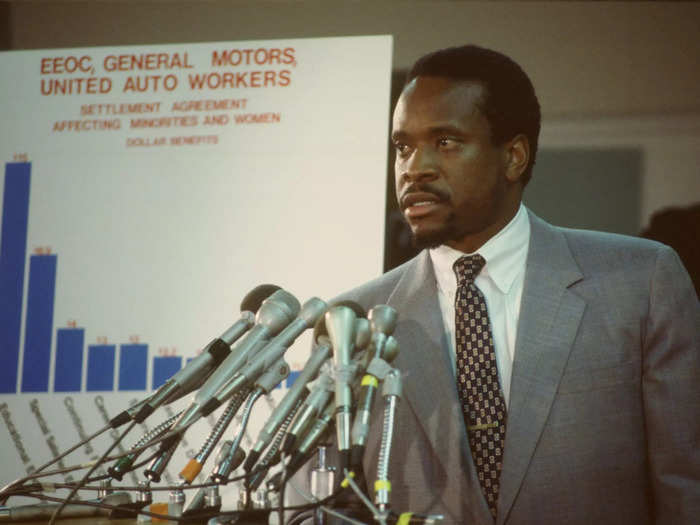
The EEOC's role was to enforce Federal law against different types of discrimination.
Sources: New York Times, Esquire
Even as he began to ascend, Thomas was a loner. In a magazine profile published in 1987, he was described as "sad, lonely, troubled."
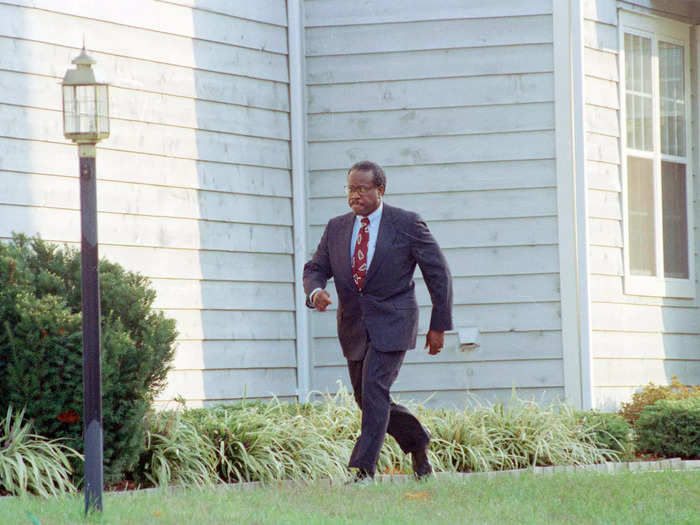
During the week he spent in the hospital in this period, one of his employees visited him and was shocked to find an empty room.
"I walked in and there was nobody in the room, no flowers, no cards," he told The Washington Post. "I said, 'If you'd just tell people you're in the hospital, you'd have visitors, flowers.' He said, 'No, don't do that.'"
Source: Washington Post
In the 1980s, he became more vocal in expressing his legal views. For instance, he regularly criticized the court’s 1954 decision in Brown v. Board of Education, saying it was a sentimental ruling that indicated Black schools were inferior to white schools.
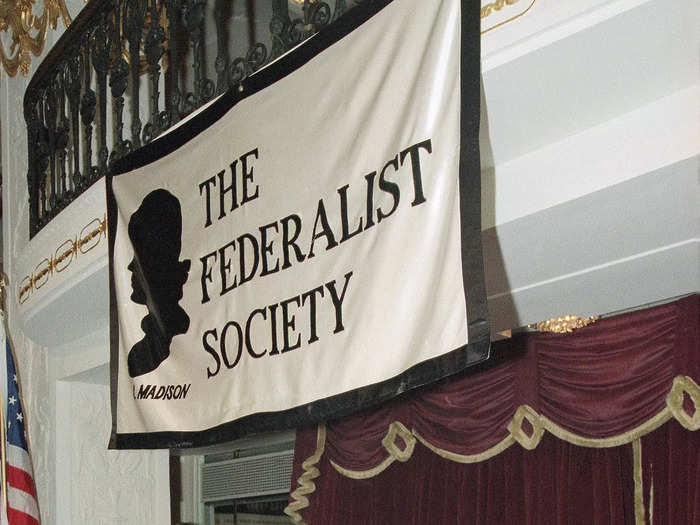
In a speech he made to Clark College in Atlanta in the 1980s, he said that racial inequality "cannot be solved by the law — even civil-rights laws."
Sources: New York Times, New Yorker
In 1984, Thomas divorced his wife, and three years later, he remarried a woman named Virginia "Ginni" Lamp in 1987.
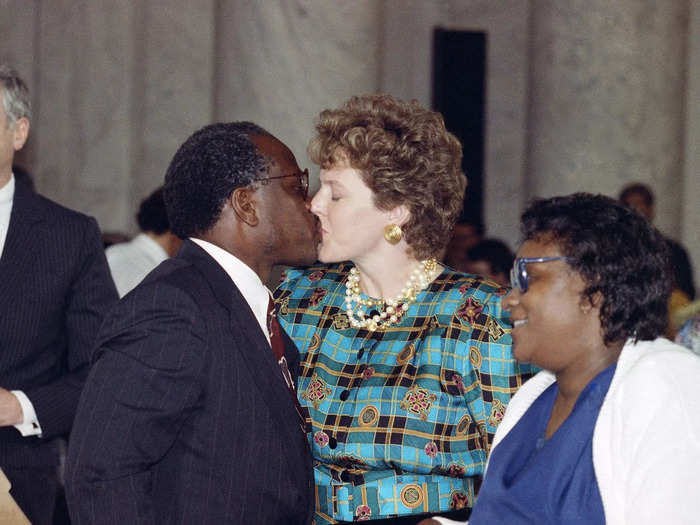
Sources: Esquire, Washington Post
In 1990, he was appointed as a federal judge on the Court of Appeals for the District of Columbia. This is one of the most important courts in America. It was around then he began to be seen as a future Supreme Court candidate.
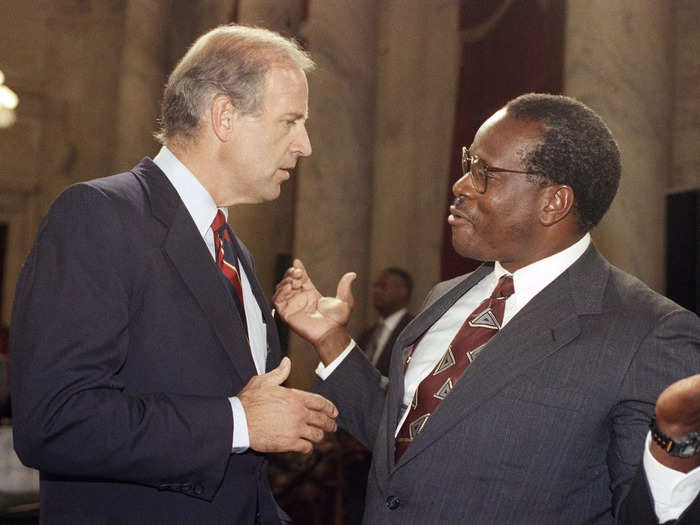
Sources: Esquire, New York Times
He only spent 15 months on the court and did not get to rule on charged issues like abortion, religion, or affirmative action.
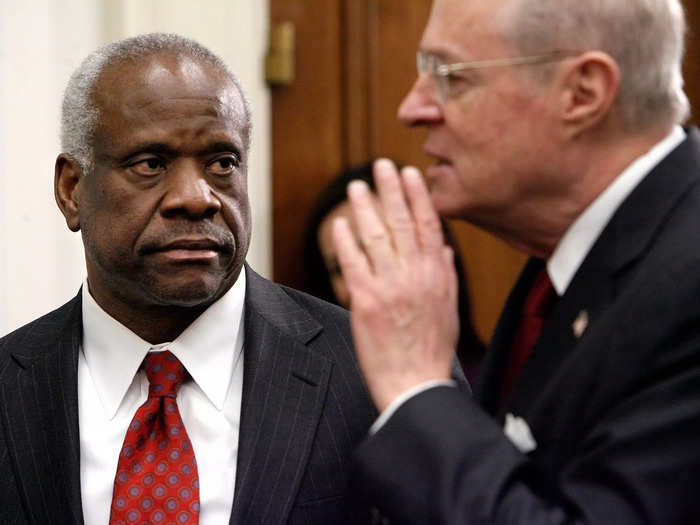
He ended up writing 20 opinions. In comparison, the late Supreme Court Justice Ruth Bader Ginsburg wrote 405 opinions for the same court before she was nominated for the Supreme Court.
Sources: New York Times, New Yorker
In 1991, he was nominated for the Supreme Court. It was one of the most heated confirmation processes in recent history. Media followed him everywhere. Court marshals were appointed to escort him and his wife to and from hearings. He was advised to wear a bulletproof vest.
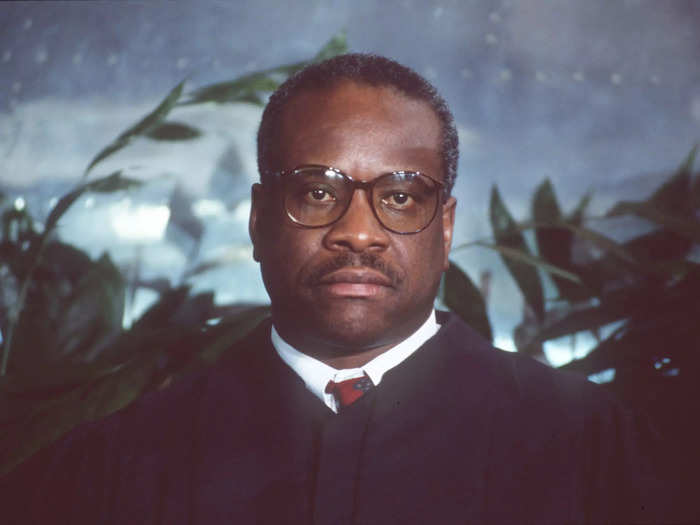
Source: Tampa Bay Times
During the confirmation he told senators — unlike the speeches he'd made in the 1980s — he would "strip down, like a runner, to eliminate agendas, to eliminate ideologies."
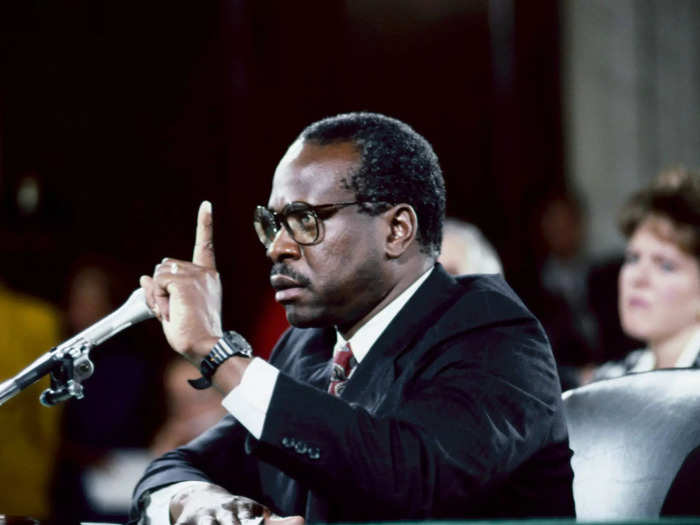
When he was questioned about his opinion on Roe v. Wade, he told senators he did not remember having any discussions about it.
According to The New Yorker, this statement was greeted with skepticism since it had been one of the defining cases of his lifetime.
At another point, he was asked if he wanted to withdraw from the nomination. He answered: "I would rather die than withdraw."
Source: New Yorker
Thomas' nomination was met with support by some in the African American community.
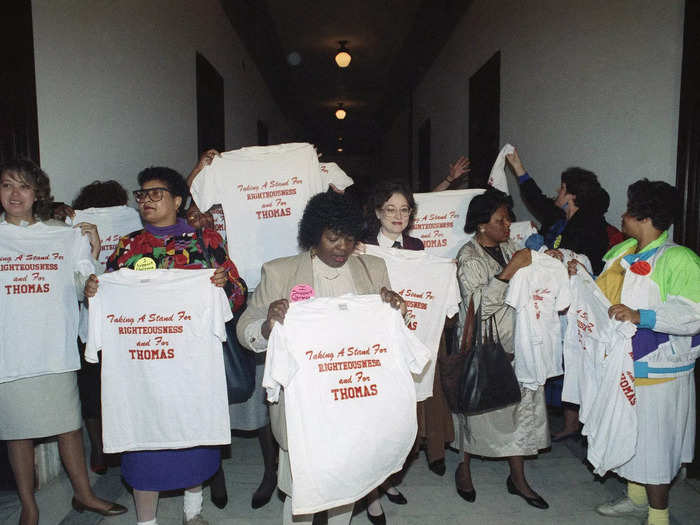
Source: The Guardian
But not by all. Famous Black rights activist Rosa Parks wrote to the Supreme Court stating she applauded Thomas' career, but that "his confirmation to the highest court in the land would not represent a step forward in the road to racial progress but a U-turn on that road."
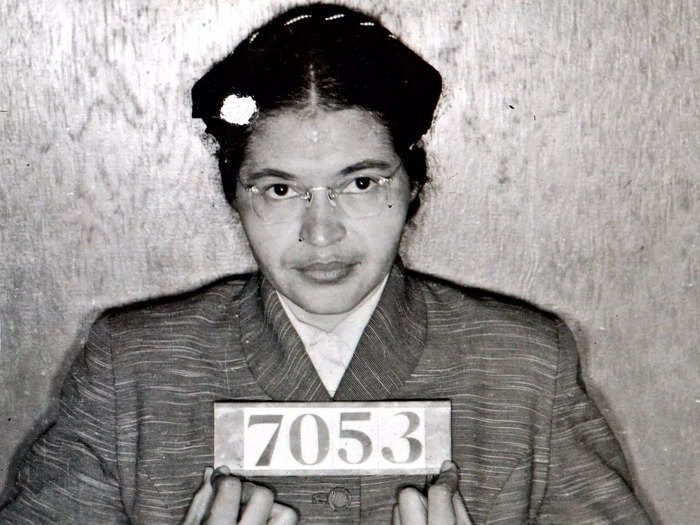
She said his statements about Brown v. Board of Education and Roe v. Wade showed he wanted to "push the clock back" on Black rights.
Source: Library of Congress
It wasn't just his legal reasoning that came under fire. During the confirmation, legal professor Anita Hill, who was one of his former employees, accused Thomas of sexual assault.
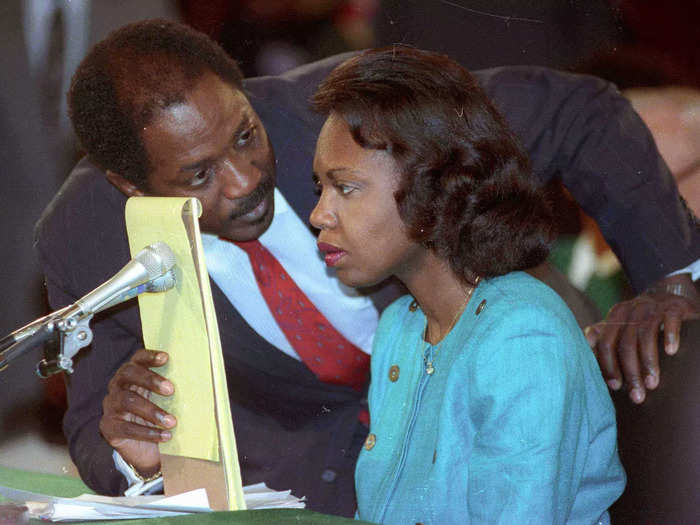
Source: Esquire
Hill testified that Thomas had asked her, "Who has put pubic hair in my Coke?"
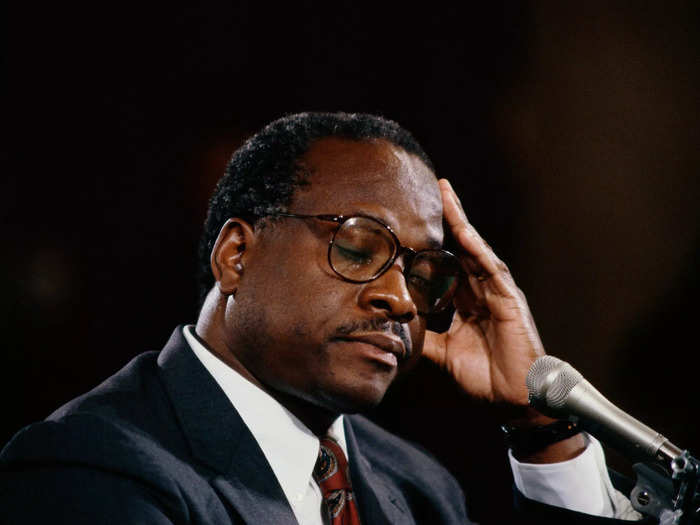
Source: New Yorker
"He talked about pornographic materials depicting individuals with large penises or large breasts, involved in various sex acts," she said in public testimony. "On several occasions, Thomas told me graphically of his own sexual prowess."

Source: NPR
Thomas denied the accusations. According to his memoir, he had an epiphany before he went to testify in his defense and made it about race. He described the accusations as "high-tech lynching for uppity Blacks who in any way deign to think for themselves."
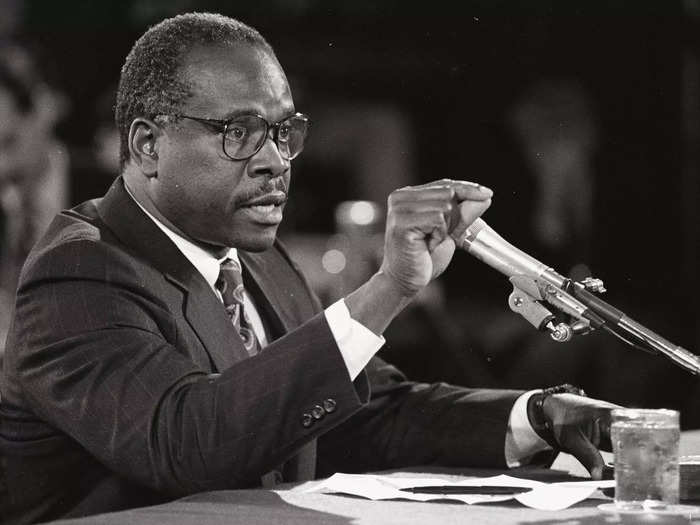
Source: Esquire
And it worked. By a vote of 52-48, the narrowest margin in more than 100 years, he was appointed to the Supreme Court. He was the second African American to join the court after Thurgood Marshall.
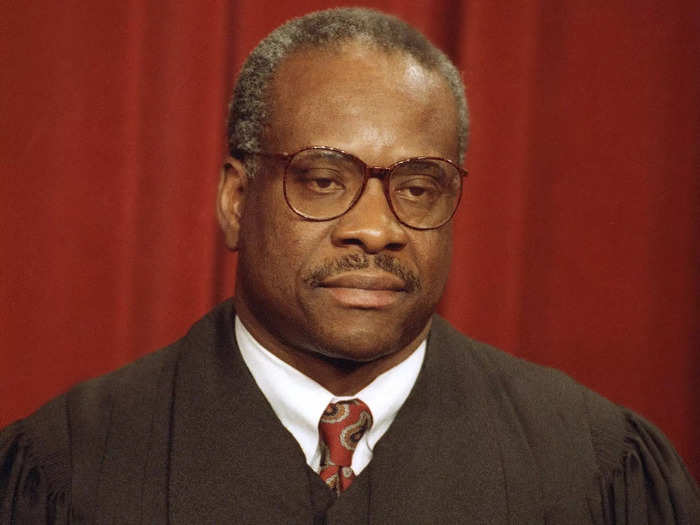
Sources: Esquire, The Nation, NPR
After all of the unwanted media attention, Thomas and his wife moved to a private house on a five-acre section of woods.
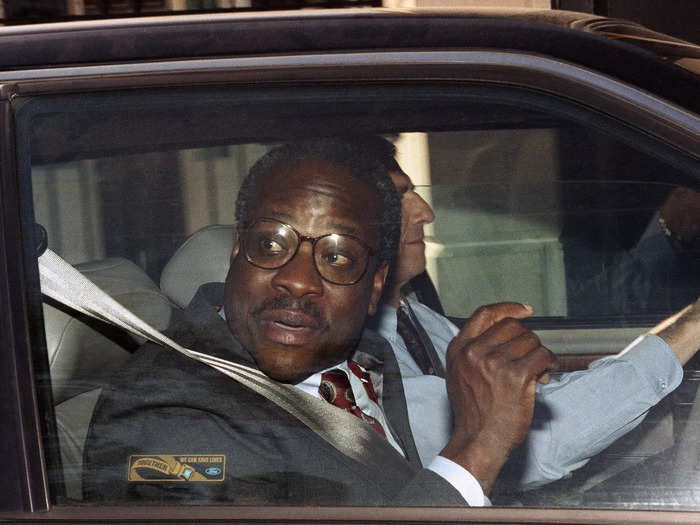
He was not quick to forgive the media or his political adversaries.
In 1992, he told two law school graduates he intended to remain on the court until 2034 so he would have a 43-year term.
"The liberals made my life miserable for 43 years, and I'm going to make their lives miserable for 43 years," he said.
Sources: New York Times, Tampa Bay Times
His relationship with the media had undeniably soured. According to a 1995 profile in the Washington Post, Thomas would rise at 4 a.m., walk on the Stairmaster for an hour, but would read no newspaper and watched no televised news — though he listened to Rush Limbaugh on the radio.
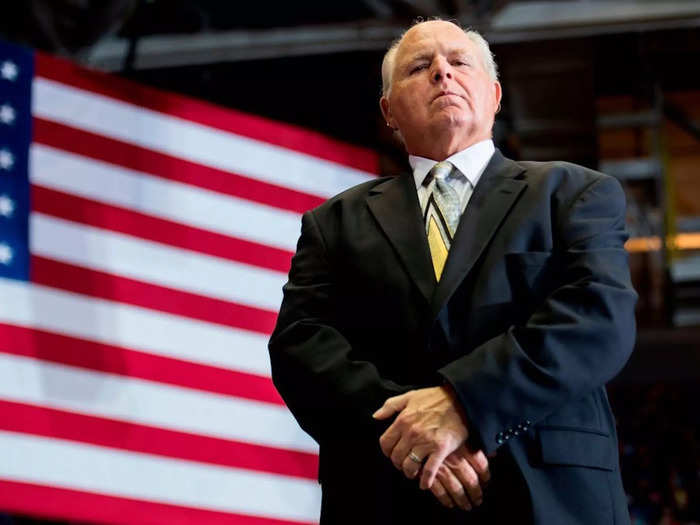
He also officiated Limbaugh's wedding.
Source: Washington Post
After the confirmation, his life changed. He told a court newsletter called "The Docket Sheet" he could no longer walk down the street with his law clerks to have a barbeque after what had happened.
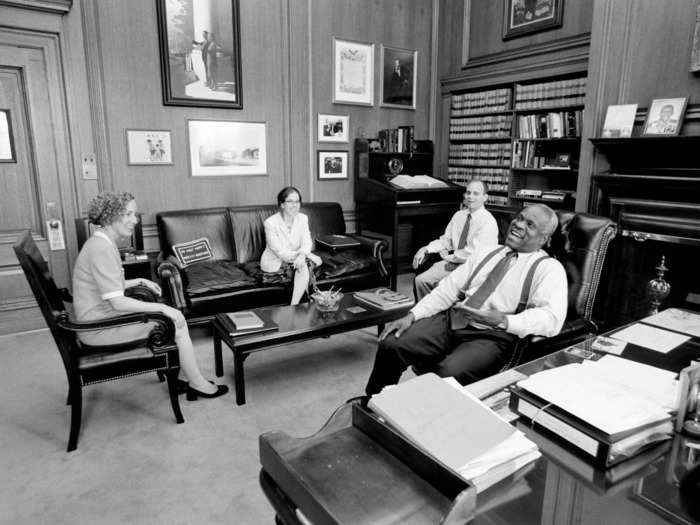
He stopped driving his black Corvette as much. It was recognizable due to the number plate REZ IPZA, a shortened version of a legal phrase that means "The thing speaks for itself."
He also denied most requests for interviews and cut out friends who spoke on his behalf to the media.
Sources: New Yorker, Tampa Bay Times
In 1999, he purchased a 40-foot custom bus with tinted windows and paneling painted red and orange fire. The Tampa Bay Times called it his "mobile fortress, a suit of armor that allows him the freedom and anonymity he has long craved."
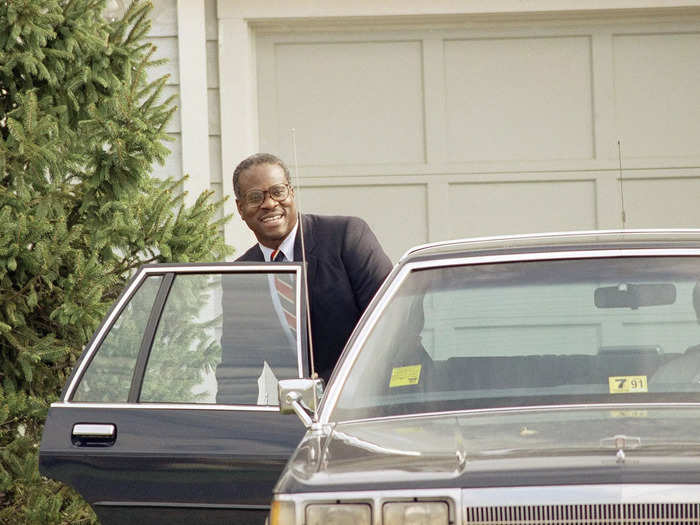
Source: Tampa Bay Times
After the death of his brother in 2000, he told a group in Florida that being on the Supreme Court was meaningless. What mattered, he said, were faith, family, and friends.
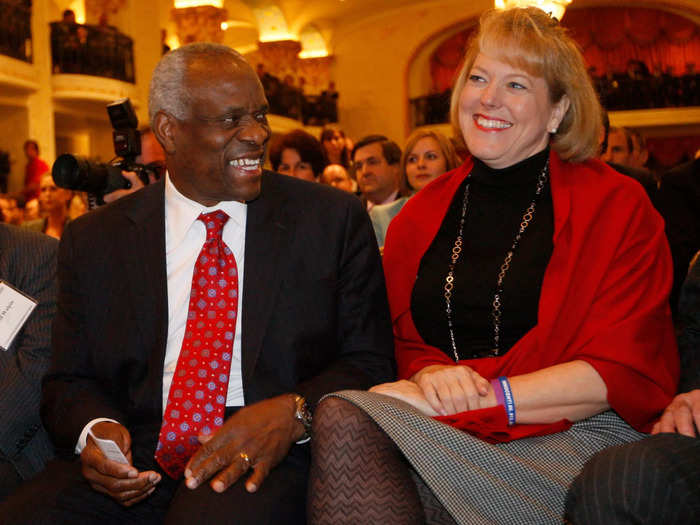
Source: Tampa Bay Times
But that didn't mean he wasn't working. As the most conservative Supreme Court Justice since the 1930s, Thomas' opinions were often dissenting in the 1990s and early 2000s.
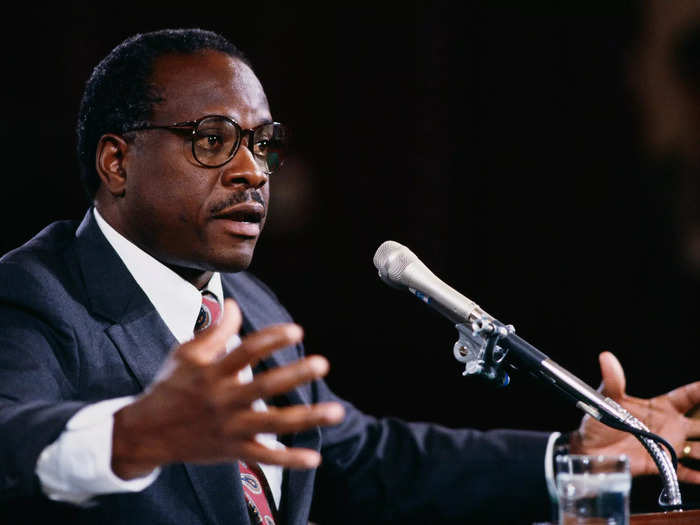
Instead of accepting legal precedents, his legal philosophy was based on originalism, the idea that the Constitution should be interpreted by its intended meaning back in 1787.
According to political scientist Corey Robin, he saw his role as being to "explain to African Americans that there is very little that the government can do for them."
Sources: New York Times, ABC, NPR
For the first decade of his Supreme Court career, Thomas had to deal with the perception that his opinions were guided by fellow Justice Antonin Scalia, who, until Thomas, had been the most conservative Justice on the Supreme Court.
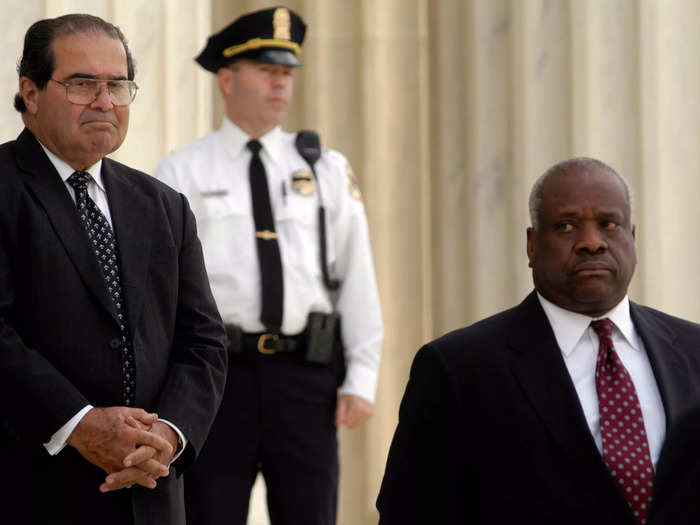
"Because I am Black, it is said that Justice Scalia has to do my work for me," he said. "He must somehow have a chip in my brain and controls me that way."
Source: Tampa Bay Times
Thomas did not write many important opinions. Because of his radical views on the law, he was rarely asked by either of the chief justices to write an opinion in a major case.
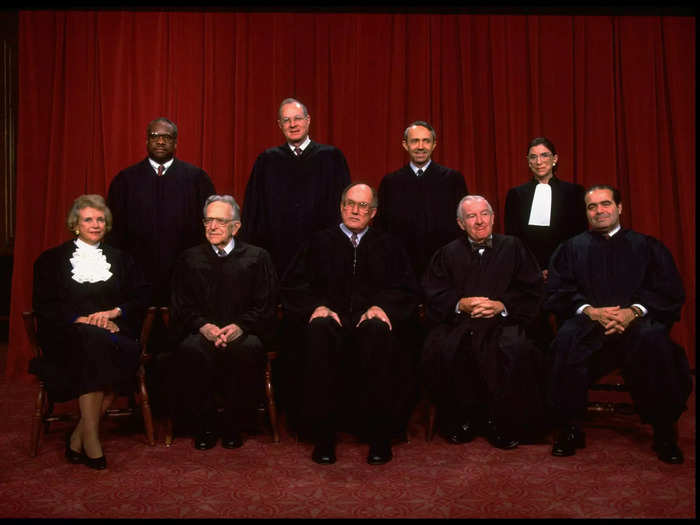
But his dissenting opinions still had repercussions.
For instance, in a case called Printz v. the United States in 1997, Thomas wrote that the Second Amendment gave an individual the right to bear arms. This was the first time it had been stated in the Supreme Court.
But just over a decade later, it was upheld by Justice Antonin Scalia in Heller v. District of Columbia.
According to Supreme Court advocate Tom Goldstein, Thomas's dissenting opinions were "planting flowers in a garden that he thinks are going to bloom a long time from now."
Not everyone agreed.
In a scathing book review, Harvard Law School professor Randall Kennedy said it was better to look to the Republican Party and Rush Limbaugh's talking points than turn to the Constitution or The Autobiography of Malcolm X to understand Thomas' legal thinking.
Sources: New Yorker, NPR, The Nation
In 2002, Thomas made some of his most well-known comments during a case about cross-burning in Virginia. In this case, the Supreme Court ended up ruling states could make it a crime to burn a cross if the point was to intimidate.
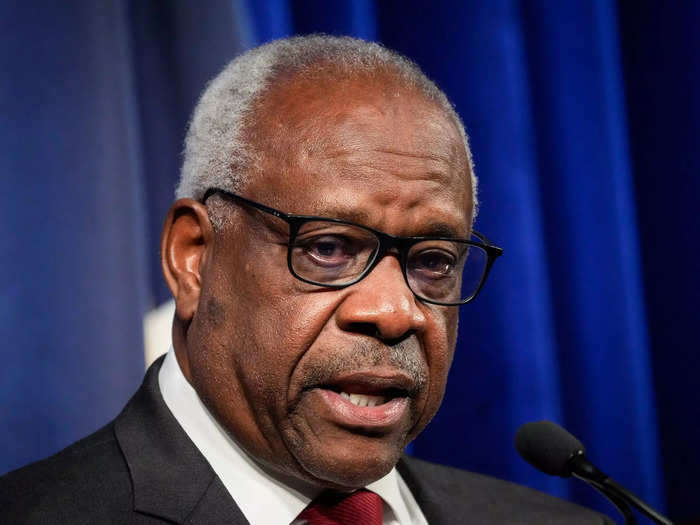
Thomas spoke movingly of the effect of the Ku Klux Klan in the South.
"This was a reign of terror, and the cross was a symbol of that reign of terror," he said. "It was intended to cause fear and to terrorize a population."
Source: New York Times
In 2006, Thomas asked a question from the bench. He would not ask another question until 2016. This was somewhat at odds with his personal life since he is known to be a big talker.
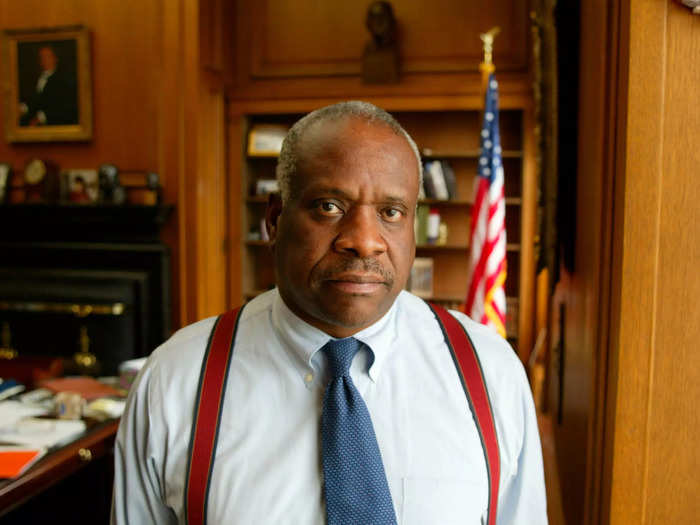
According to his memoir, he was self-conscious about how he talked. He also never spoke in college or law school.
Sources: Esquire, New York Times , Tampa Bay Times
Thomas is known for his décor with staff at the court. He knows the names of every employee and invites people to have long conversations with him in his office.
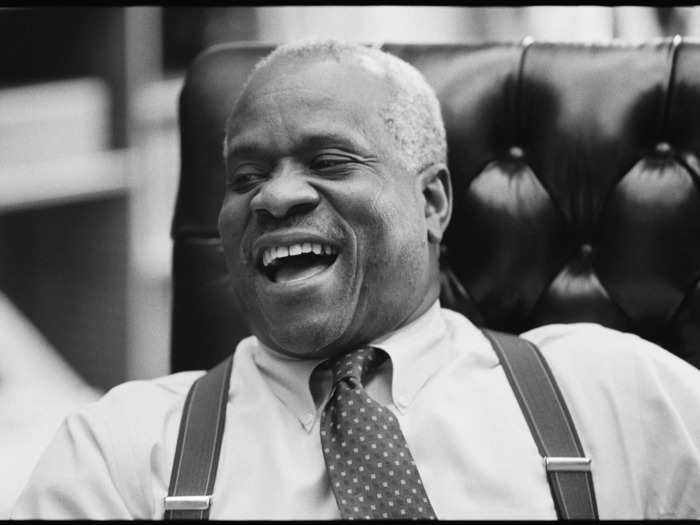
One of his former clerks in the 1990s, Stephen McAllister, a former US Attorney for the District of Kansas, told Insider in 2022: "I'm not saying I agree with everything that he believes or does, but as a person, he's very genuine, warm, actually humble, and sincere and cares a lot about people actually as individuals."
Sources: The Atlantic, Insider
While Thomas was rarely inclined to speak publicly, his wife Virginia started to speak out politically. She began to have an impact on his career due to her conservative advocacy.
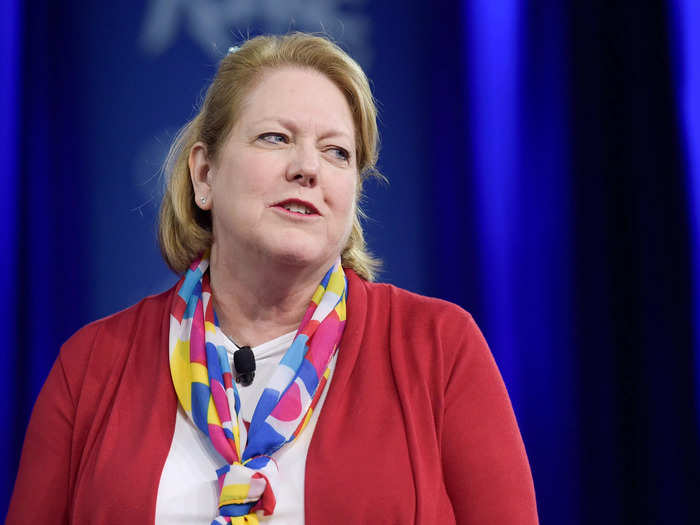
On January 6, 2020, Ginni Thomas attended the "Stop the Steal" rally that preceded the mob of Trump supporters that stormed the Capitol.
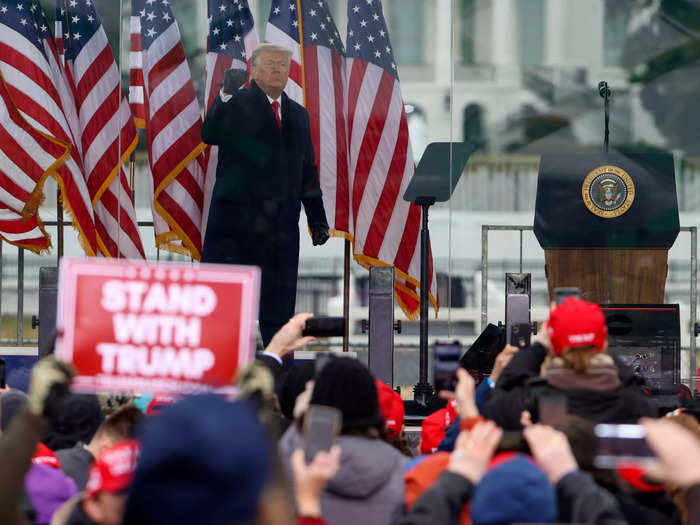
She sent text messages to then-White House Chief of Staff Mark Meadows urging him to overturn the 2020 election.
After her support of Trump and her promotion of conspiracy theories became public, there were calls for Clarence Thomas to be removed from the Supreme Court, including a petition with more than one million signatures.
But Thomas did not resign.
He was criticized for not recusing himself from certain cases where there was a potential for bias.
For instance, he voted on cases relating to the election as well as writing a lone dissenting opinion about whether or not Trump White House documents could be released to the January 6 Committee.
Sources: Esquire, Move On, The Conversation, CNN, Insider
Instead of resigning, Thomas became more powerful. After 30 years of being an outlier on the Supreme Court, he was now part of the majority thanks to former President Donald Trump's judicial appointments.
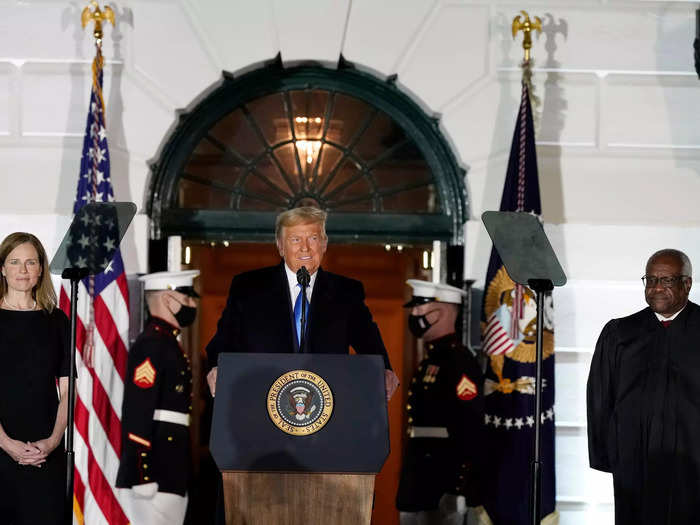
Thomas was joined by three conservative justices — Neil Gorsuch, Brett Kavanaugh and Amy Coney Barrett — while Trump nominated 11 of Thomas' former clerks as judges and four of those made it onto the Court of Appeals.
Source: New Yorker
In June of 2022, Thomas helped overturn Roe v. Wade, which protected abortion as a fundamental right, a case he had been openly against for more than 30 years.
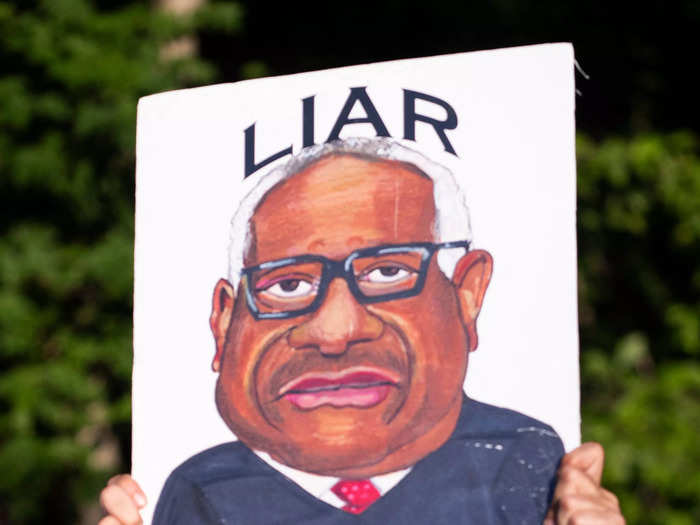
Source: Esquire
In that opinion, he wrote that the court should overturn cases that established rights for same-sex marriage, same-sex relations and contraception based on the same rationale.
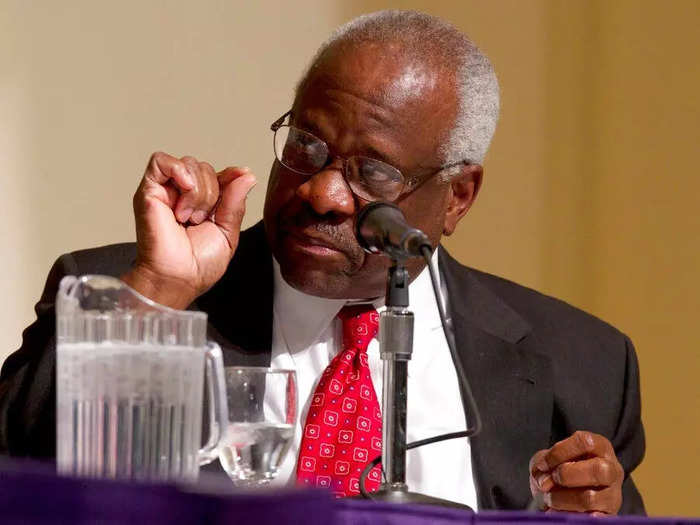
Source: New York Times
Now, Thomas is arguably one of the most powerful justices on the Supreme Court and his goal to push back 1960s social and political reforms is underway.
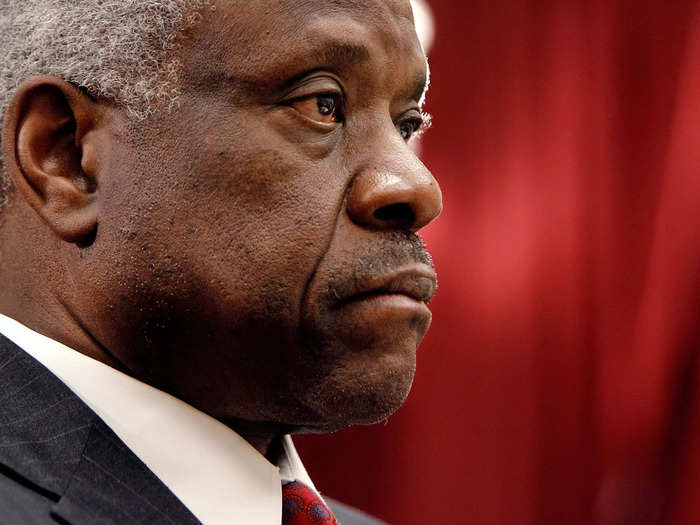
Source: The Conversation
Popular Right Now
Popular Keywords
Advertisement